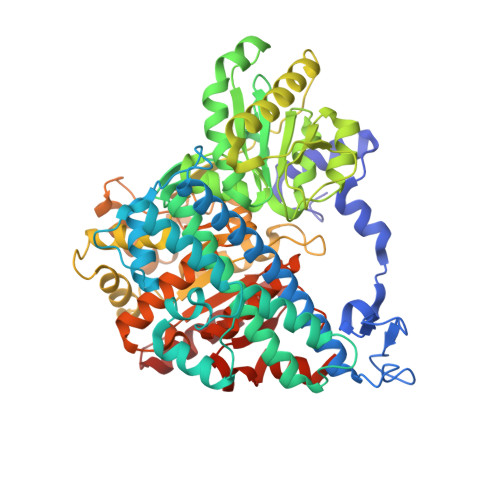How the [NiFe4S4] Cluster of CO Dehydrogenase Activates CO2 and NCO(-).
Fesseler, J., Jeoung, J.H., Dobbek, H.(2015) Angew Chem Int Ed Engl 54: 8560-8564
- PubMed: 25926100
- DOI: https://doi.org/10.1002/anie.201501778
- Primary Citation of Related Structures:
4UDX, 4UDY - PubMed Abstract:
Ni,Fe-containing CO dehydrogenases (CODHs) use a [NiFe4S4] cluster, termed cluster C, to reversibly reduce CO2 to CO with high turnover number. Binding to Ni and Fe activates CO2, but current crystal structures have insufficient resolution to analyze the geometry of bound CO2 and reveal the extent and nature of its activation. The crystal structures of CODH in complex with CO2 and the isoelectronic inhibitor NCO(-) are reported at true atomic resolution (dmin ≤1.1 Å). Like CO2, NCO(-) is a μ2,η(2) ligand of the cluster and acts as a mechanism-based inhibitor. While bound CO2 has the geometry of a carboxylate group, NCO(-) is transformed into a carbamoyl group, thus indicating that both molecules undergo a formal two-electron reduction after binding and are stabilized by substantial π backbonding. The structures reveal the combination of stable μ2,η(2) coordination by Ni and Fe2 with reductive activation as the basis for both the turnover of CO2 and inhibition by NCO(-).
Organizational Affiliation:
Institut für Biologie, Strukturbiologie/Biochemie, Humboldt-Universität zu Berlin, Unter den Linden 6, 10099 Berlin (Germany).



















